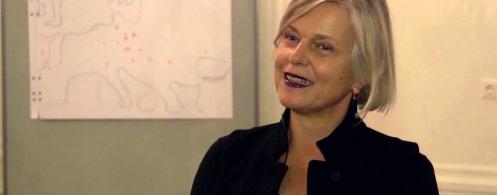
Curating in a Pan-European Framework
Which academic works have particularly influenced the curation process?
I’d start first by highlighting the works of the Swiss writer Adolph Muschg. In particular his article Thoughts about the European Identity provided a starting point for the theoretical basis of our curation process. In the article, Muschg maintains that Europe is both bound and divided by, quintessentially, the shared memory. In addition, works by Maurice Halbwachs, Aleida Assmann and Pierre Nora helped further develop our conceptualisation of common memory.
In terms of the narrative aspect of the House, there are several key sources which were of fundamental importance for our historiography: Postwar by Tony Judt; The Age of Extremes by Eric Hobsbawm; and The Transformation of the World by Jürgen Osterhammel. I find these works outstanding due to the wealth of detail they provide, as well as their use of large-scale analysis in a European dimension.
Lastly I’d like to mention a book by the French philosopher Edgar Morin - Penser l’Europe. This text is significant because it explores the driving forces that can help explain the complexities of the European ‘unity in diversity’.
To what extent did these driving forces impact the narrative of the museum?
Our narrative starts in the 19th century, where we identify and accentuate the driving forces which have been borne in Europe during this period of time - be it concepts of democracy, people’s sovereignty, liberalism, capitalism, socialism, the welfare state. In our exhibition we try to follow these ideas – how they developed on Europe’s journey to modernity, how did extreme rationality turn into extreme irrationality in the 20th century?
One of the unique aspects of the museum is the use of a 'Pan-European' lens to view European events - compared to a national model - could you expand on that?
At a very early stage in our work we defined three key criteria: we focus on events, developments and phenomena which are originally European; they have to, more or less, have spread across the continent; and they are still relevant today.
What form does best practice take for curators on trans-national projects?
All research, reading, evidenting of objects, must focus on European phenomena. Curators on the project have to leave behind some aspects of their training and transcend ‘national thinking’ on historical relations. For example, each region and country has its own experiences: World War One means something very different in Germany, France or Poland. Our aim is to create a historiographical framework of European history within which we can explain these differences.
Curators on the team come from a number of academic disciplines – not just history - how did you establish which are relevant and emphasised in the curation process?
All expertise was welcome. A museum is a medium which affects all senses – it should be intellectually-challenging, satisfying, fun, inspirational and enriching. When it comes to object-research, a curator needs a feeling for aesthetic values and ‘attraction power’. So, each curator on the team is different, with his or her own strengths. We had an ideal situation to bring together all these talents to produce a multifaceted result.
